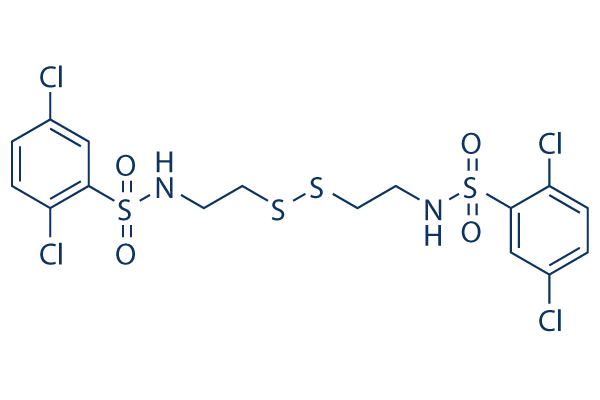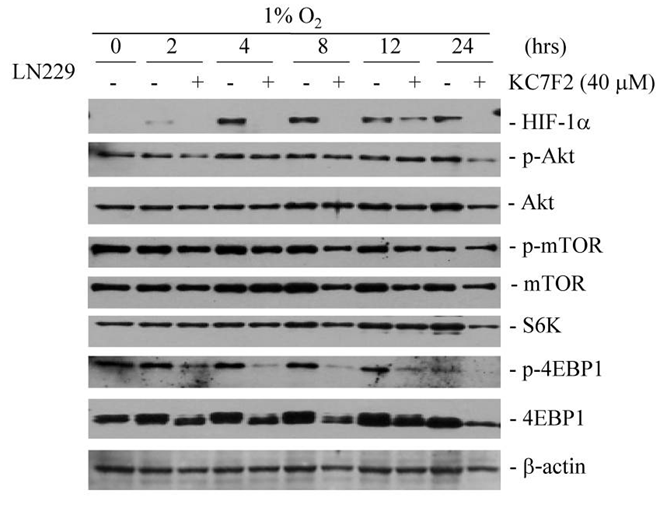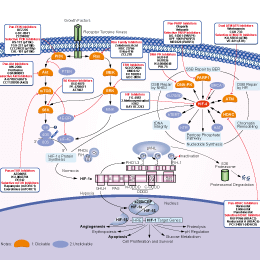
- Bioactive Compounds
- By Signaling Pathways
- PI3K/Akt/mTOR
- Epigenetics
- Methylation
- Immunology & Inflammation
- Protein Tyrosine Kinase
- Angiogenesis
- Apoptosis
- Autophagy
- ER stress & UPR
- JAK/STAT
- MAPK
- Cytoskeletal Signaling
- Cell Cycle
- TGF-beta/Smad
- DNA Damage/DNA Repair
- Compound Libraries
- Popular Compound Libraries
- Customize Library
- Clinical and FDA-approved Related
- Bioactive Compound Libraries
- Inhibitor Related
- Natural Product Related
- Metabolism Related
- Cell Death Related
- By Signaling Pathway
- By Disease
- Anti-infection and Antiviral Related
- Neuronal and Immunology Related
- Fragment and Covalent Related
- FDA-approved Drug Library
- FDA-approved & Passed Phase I Drug Library
- Preclinical/Clinical Compound Library
- Bioactive Compound Library-I
- Bioactive Compound Library-Ⅱ
- Kinase Inhibitor Library
- Express-Pick Library
- Natural Product Library
- Human Endogenous Metabolite Compound Library
- Alkaloid Compound LibraryNew
- Angiogenesis Related compound Library
- Anti-Aging Compound Library
- Anti-alzheimer Disease Compound Library
- Antibiotics compound Library
- Anti-cancer Compound Library
- Anti-cancer Compound Library-Ⅱ
- Anti-cancer Metabolism Compound Library
- Anti-Cardiovascular Disease Compound Library
- Anti-diabetic Compound Library
- Anti-infection Compound Library
- Antioxidant Compound Library
- Anti-parasitic Compound Library
- Antiviral Compound Library
- Apoptosis Compound Library
- Autophagy Compound Library
- Calcium Channel Blocker LibraryNew
- Cambridge Cancer Compound Library
- Carbohydrate Metabolism Compound LibraryNew
- Cell Cycle compound library
- CNS-Penetrant Compound Library
- Covalent Inhibitor Library
- Cytokine Inhibitor LibraryNew
- Cytoskeletal Signaling Pathway Compound Library
- DNA Damage/DNA Repair compound Library
- Drug-like Compound Library
- Endoplasmic Reticulum Stress Compound Library
- Epigenetics Compound Library
- Exosome Secretion Related Compound LibraryNew
- FDA-approved Anticancer Drug LibraryNew
- Ferroptosis Compound Library
- Flavonoid Compound Library
- Fragment Library
- Glutamine Metabolism Compound Library
- Glycolysis Compound Library
- GPCR Compound Library
- Gut Microbial Metabolite Library
- HIF-1 Signaling Pathway Compound Library
- Highly Selective Inhibitor Library
- Histone modification compound library
- HTS Library for Drug Discovery
- Human Hormone Related Compound LibraryNew
- Human Transcription Factor Compound LibraryNew
- Immunology/Inflammation Compound Library
- Inhibitor Library
- Ion Channel Ligand Library
- JAK/STAT compound library
- Lipid Metabolism Compound LibraryNew
- Macrocyclic Compound Library
- MAPK Inhibitor Library
- Medicine Food Homology Compound Library
- Metabolism Compound Library
- Methylation Compound Library
- Mouse Metabolite Compound LibraryNew
- Natural Organic Compound Library
- Neuronal Signaling Compound Library
- NF-κB Signaling Compound Library
- Nucleoside Analogue Library
- Obesity Compound Library
- Oxidative Stress Compound LibraryNew
- Plant Extract Library
- Phenotypic Screening Library
- PI3K/Akt Inhibitor Library
- Protease Inhibitor Library
- Protein-protein Interaction Inhibitor Library
- Pyroptosis Compound Library
- Small Molecule Immuno-Oncology Compound Library
- Mitochondria-Targeted Compound LibraryNew
- Stem Cell Differentiation Compound LibraryNew
- Stem Cell Signaling Compound Library
- Natural Phenol Compound LibraryNew
- Natural Terpenoid Compound LibraryNew
- TGF-beta/Smad compound library
- Traditional Chinese Medicine Library
- Tyrosine Kinase Inhibitor Library
- Ubiquitination Compound Library
-
Cherry Picking
You can personalize your library with chemicals from within Selleck's inventory. Build the right library for your research endeavors by choosing from compounds in all of our available libraries.
Please contact us at [email protected] to customize your library.
You could select:
- Antibodies
- Bioreagents
- qPCR
- 2x SYBR Green qPCR Master Mix
- 2x SYBR Green qPCR Master Mix(Low ROX)
- 2x SYBR Green qPCR Master Mix(High ROX)
- Protein Assay
- Protein A/G Magnetic Beads for IP
- Anti-Flag magnetic beads
- Anti-Flag Affinity Gel
- Anti-Myc magnetic beads
- Anti-HA magnetic beads
- Magnetic Separator
- Poly DYKDDDDK Tag Peptide lyophilized powder
- Protease Inhibitor Cocktail
- Protease Inhibitor Cocktail (EDTA-Free, 100X in DMSO)
- Phosphatase Inhibitor Cocktail (2 Tubes, 100X)
- Cell Biology
- Cell Counting Kit-8 (CCK-8)
- Animal Experiment
- Mouse Direct PCR Kit (For Genotyping)
- New Products
- Contact Us
KC7F2
KC7F2 is a selective HIF-1α translation inhibitor with IC50 of 20 μM in a cell-based assay.

KC7F2 Chemical Structure
CAS No. 927822-86-4
Purity & Quality Control
Batch:
Purity:
99.42%
99.42
KC7F2 Related Products
| Related Targets | HIF1 HIF2 PHD1 PHD2 PHD3 | Click to Expand |
|---|---|---|
| Related Products | PX-478 2HCl BAY 87-2243 Lificiguat (YC-1) IOX2 CAY10585 (LW 6) Molidustat (BAY 85-3934) PT2385 IDF-11774 MK-8617 Daprodustat (GSK1278863) FG-2216 Vadadustat Glucosamine Enarodustat (JTZ-951) SYP-5 IOX4 | Click to Expand |
| Related Compound Libraries | Tyrosine Kinase Inhibitor Library PI3K/Akt Inhibitor Library Angiogenesis Related compound Library HIF-1 Signaling Pathway Compound Library FDA-approved Anticancer Drug Library | Click to Expand |
Signaling Pathway
Biological Activity
| Description | KC7F2 is a selective HIF-1α translation inhibitor with IC50 of 20 μM in a cell-based assay. | ||
|---|---|---|---|
| Targets |
|
| In vitro | ||||
| In vitro | KC7F2 inhibits HIF-1α protein synthesis but not its mRNA transcription. KC7F2 inhibits HRE-driven transcription and decreases HIF-1α protein levels in LN229-HRE-AP cells. KC7F2 shows a dose-response cytotoxicity with IC50 of approximately 15 to 25 μM in cancer cells MCF7, LNZ308, A549, U251MG, and LN229. In D54MG glioma cells, KC7F2 inhibits colony formation, especially under hypoxia. [1] In hypoxic microglial cultures, KC7F2 downregulates the expression of TfR and DMT, and reduces the HIF-1α mediated iron accumulation. [2] |
|||
|---|---|---|---|---|
| Kinase Assay | HIF transcriptional activity assay | |||
| Cells are incubated at 37癈 in a humidified atmosphere containing 5% CO2 and 21% O2 (normoxia) or 1% O2 (hypoxia) in a hypoxia workstation. The LN229-HRE-AP reporter cell line for HIF transcriptional activity is created by stably transfecting LN229 cells with the pACN188 plasmid, which contains an alkaline phosphatase gene driven by six HREs derived from the VEGF gene. | ||||
| Cell Research | Cell lines | Human dermal microvascular endothelial cells and mouse neurons; MCF7, LNZ308, A549, U251MG, and LN229 cell lines | ||
| Concentrations | 72 h | |||
| Incubation Time | 20 μM | |||
| Method | Cells are seeded onto 96-well plates (4 × 103/well) and cultured under normoxic (21% O2) and hypoxic (1% O2) conditions with different concentrations of KC7F2 for 72 h or treated for various times with 20 μM KC7F2. For proliferation analysis, cells are fixed with 50% trichloroacetic acid for 1 h at 4°C, followed by staining with 0.4% sulforhodamine B dissolved in 1% acetic acid for 30 min at room temperature. Plates are washed five times with 1% acetic acid to remove unbound dye. Bound dye is dissolved by adding 10 mM unbuffered Tris base. Cell proliferation is calculated by measuring OD values at 564 nm using a spectrophotometer. |
|||
| Experimental Result Images | Methods | Biomarkers | Images | PMID |
| Growth inhibition assay | Cell proliferation |

|
19789328 | |
| Western blot | HIF-1α / p-AKT / AKT / p-mTOR / mTOR / S6K / p-4EBP1 / 4EBP1 |

|
19789328 | |
| In Vivo | ||
| In vivo | KC7F2 significantly reduces the latent period in the pentylenetetrazole kindling rat model and increases the rate of spontaneous recurrent seizures during the chronic stage. [3] |
|
|---|---|---|
Chemical Information & Solubility
| Molecular Weight | 570.38 | Formula | C16H16Cl4N2O4S4 |
| CAS No. | 927822-86-4 | SDF | Download KC7F2 SDF |
| Smiles | C1=CC(=C(C=C1Cl)S(=O)(=O)NCCSSCCNS(=O)(=O)C2=C(C=CC(=C2)Cl)Cl)Cl | ||
| Storage (From the date of receipt) | |||
|
In vitro |
DMSO : 100 mg/mL ( (175.32 mM) Moisture-absorbing DMSO reduces solubility. Please use fresh DMSO.) Water : Insoluble Ethanol : Insoluble |
Molecular Weight Calculator |
|
In vivo Add solvents to the product individually and in order. |
In vivo Formulation Calculator |
||||
Preparing Stock Solutions
Molarity Calculator
In vivo Formulation Calculator (Clear solution)
Step 1: Enter information below (Recommended: An additional animal making an allowance for loss during the experiment)
mg/kg
g
μL
Step 2: Enter the in vivo formulation (This is only the calculator, not formulation. Please contact us first if there is no in vivo formulation at the solubility Section.)
% DMSO
%
% Tween 80
% ddH2O
%DMSO
%
Calculation results:
Working concentration: mg/ml;
Method for preparing DMSO master liquid: mg drug pre-dissolved in μL DMSO ( Master liquid concentration mg/mL, Please contact us first if the concentration exceeds the DMSO solubility of the batch of drug. )
Method for preparing in vivo formulation: Take μL DMSO master liquid, next addμL PEG300, mix and clarify, next addμL Tween 80, mix and clarify, next add μL ddH2O, mix and clarify.
Method for preparing in vivo formulation: Take μL DMSO master liquid, next add μL Corn oil, mix and clarify.
Note: 1. Please make sure the liquid is clear before adding the next solvent.
2. Be sure to add the solvent(s) in order. You must ensure that the solution obtained, in the previous addition, is a clear solution before proceeding to add the next solvent. Physical methods such
as vortex, ultrasound or hot water bath can be used to aid dissolving.
Tech Support
Answers to questions you may have can be found in the inhibitor handling instructions. Topics include how to prepare stock solutions, how to store inhibitors, and issues that need special attention for cell-based assays and animal experiments.
Tel: +1-832-582-8158 Ext:3
If you have any other enquiries, please leave a message.
* Indicates a Required Field
Tags: buy KC7F2 | KC7F2 supplier | purchase KC7F2 | KC7F2 cost | KC7F2 manufacturer | order KC7F2 | KC7F2 distributor







































